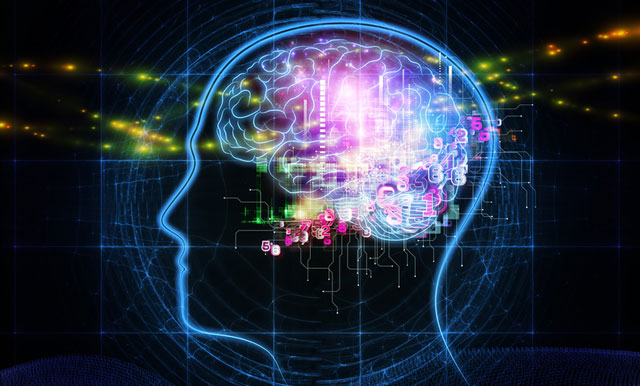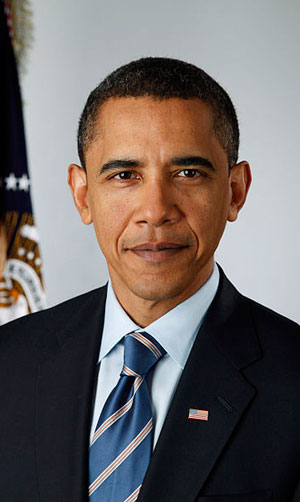
Imagine opening a computer and finding that the manufacturer hasn’t bothered to provide multicoloured wires in the tangle of cords. Now multiply that tangle of grey wires by 100m, unplug the power cord — and then try to follow the signals from each keystroke through those wires to an answer on the computer screen.
That’s the challenge US president Barack Obama appears to have laid down for scientists a few months ago, with his “moonshot” plan to map the human brain in 10 years.
A “dream team” of 15 neuroscientists is to get R900m in start-up funding to direct a national effort comparable to the human genome project, and which may cost more than R30bn in the next decade.
At stake, according to some experts, is the only realistic route to curing both degenerative diseases, such as Alzheimer’s and Parkinson’s, as well as neurological disorders such as epilepsy, autism and schizophrenia.
Experts told the Mail & Guardian that many cures — perhaps even for violent psychosis — could lie simply in blocking misfiring cells, if only we knew where they were.
Some were optimistic, largely based on the recent invention of two breakthrough mapping tools by a bioengineering genius at Stanford University, Karl Deisseroth, the superstar in Obama’s dream team.
But Vivienne Russell, associate professor of neuroscience at the University of Cape Town, says their challenge was far beyond the sheer number of “wires”, with about 100bn brain cells and perhaps a trillion brain connections.
Russell says medical science already fully understands our other organs. “If you understand one kidney cell or liver cell, you understand them all.”
But no two brain cells, or neurons, do exactly the same thing, she says, and many are wildly different.
So mapping a kidney is a bit like understanding the ecology of a commercial timber forest, where researchers can walk on the neat, bare ground among identical trees.
To date, mapping the brain has been like trying to understand the Amazon jungle, where researchers must try to grasp all the interacting flora and fauna from an aircraft flying overhead.
Russell said a map of the brain could lead to effective treatments for disorders such as epilepsy, but said degenerative disorders would require additional understanding of the chemistry of the cells. “We need to know why neurons die,” she said.
Critics of Obama’s plan — many of them neuroscientists — argue the mission either puts all brain research eggs in one basket or that it is “insanely ambitious”.
That’s because the human brain is the most complex object known in the universe, and by far the most difficult maze to solve.
To be precise, it was recently confirmed at Harvard’s Center for Brain Science that a human infant’s brain is the most complicated known object, with three times the brain connections of adults.
The research showed that most of these “dry up” and fall off as a baby learns it doesn’t need them, or as rival connections compete with each other.
This lab has pioneered one of the key tools, called “Brainbow”, for telling individual brain cells apart — including the bushy dendrites, the cell body, the sausage-like axon, and the sparkplug-like synapse gap — from the dense forest of cells around it.
When the M&G visited the centre, near the iconic, facebrick Harvard Yard, it looked more like a computer lab than anything to do with biology.
That’s partly because the brain tissue analysed here is sliced into sections 1000th the width of a human hair.
Even a tissue film that thin is swarming with an impossible tangle of axons, so researchers here use genes from jellyfish and other animals to dye each neuron one of 16 phosphorescent colours.

And so — like reverse engineering an old computer hard drive — they can follow a single, say, yellow-green axon on either side of a knot of cells.
Prof Jeff Lichtman, the Brainbow team leader, warns that Obama’s challenge, called Brain Research through Advancing Innovative Neurotechnologies — Brain, for short, “at the moment is not yet a project”, and that its focus was not yet clear.
Lichtman said he was optimistic about the project’s benefits for disease if it focused on “wiring”, but not so if it sought to map the brain’s “firing”.
“The president’s advisers have raised the idea of a ‘brain activity map’ — and it’s the ‘activity’ part of that which concerns me,” he said. “We have a long way to go before we have even a fundamental understanding of this organ, much less trying to map the electric pulses running through its circuits. If you map the wiring, you’ll know when you’re done, but how do you finish a map of electric signals?”
For a wiring map, Lichtman said the Brainbow technique could be used in conjunction with a breakthrough technique announced by Deisseroth’s team at Stanford last month. Called “Clarity”, the method turns the opaque brain into a transparent, jelly-like organ, allowing scientists to trace nerve fibres deep into the tissue.
The technique dissolves fats while leaving most proteins undamaged.
Meanwhile, Deisseroth has also pioneered a second method, called “optogenetics”, which can control individual brain cells with light-sensitive proteins.
Lichtman said Deisseroth’s breakthroughs were critical because functional magnetic resonance imaging scanners had resolutions far too limited to track individual nerve cells.
Another way to understand the scale of the challenge is this: Obama’s “dream team”, using MRIs, optogenetics and supercomputers, will start their map with a conceptual tool no more advanced than the 120-year-old drawings of an eccentric Spanish artist.
In the 1880s, Ramón Cajal produced sketches of what he claimed were whole brain cells and neural networks, for which he was derided by senior scientists.
At the time, neurons were unknown; the nervous system was assumed to be made up of “grey matter” — a blob known as “reticulum”, which was merely nourished by round nerve cells.
Cajal created his own drawings from coloured stains under a microscope, and figured out modern neuroscience through “pure deductive reasoning”.
But he didn’t just draw the thread-like individual nerve cells, complete with dendrites, synapses, and complicated neural network trees.
Audaciously, Cajal also included arrows, to show which direction the current of thought was flowing.
According to Lichtman, the arrows, in particular, were “absolute intuitive genius” — and admitted that “we haven’t learned very much more” about the brain’s microcircuitry in the century of research since.
He said Cajal simply looked at brain cells and understood, the way Isaac Newton understood gravity or Tesla understood electricity.
Now, groups such as the US’s Alzheimers Association — which supports Obama’s push — are hoping people like Deisseroth can make similar leaps.
New York University neuroscientist Rodolfo Llinás recently wrote: “To many of us, Ramon Cajal personifies, above all, the belief that we actually can understand the nervous system.”
Lichtman said it had taken years, using a supercomputer in his lab, to map the nerve cells that cause a mouse’s ear to twitch.
Asked whether brain circuits could be mapped within 10 years, as per Obama’s challenge, Lichtman gave an answer that was all the more extraordinary, and depressing, for his enthusiasm: “Yes — we could perhaps map a full cubic millimetre of brain in a decade; it’s doable!” — (c) 2013 Mail & Guardian
- Visit the Mail & Guardian Online, the smart news source

